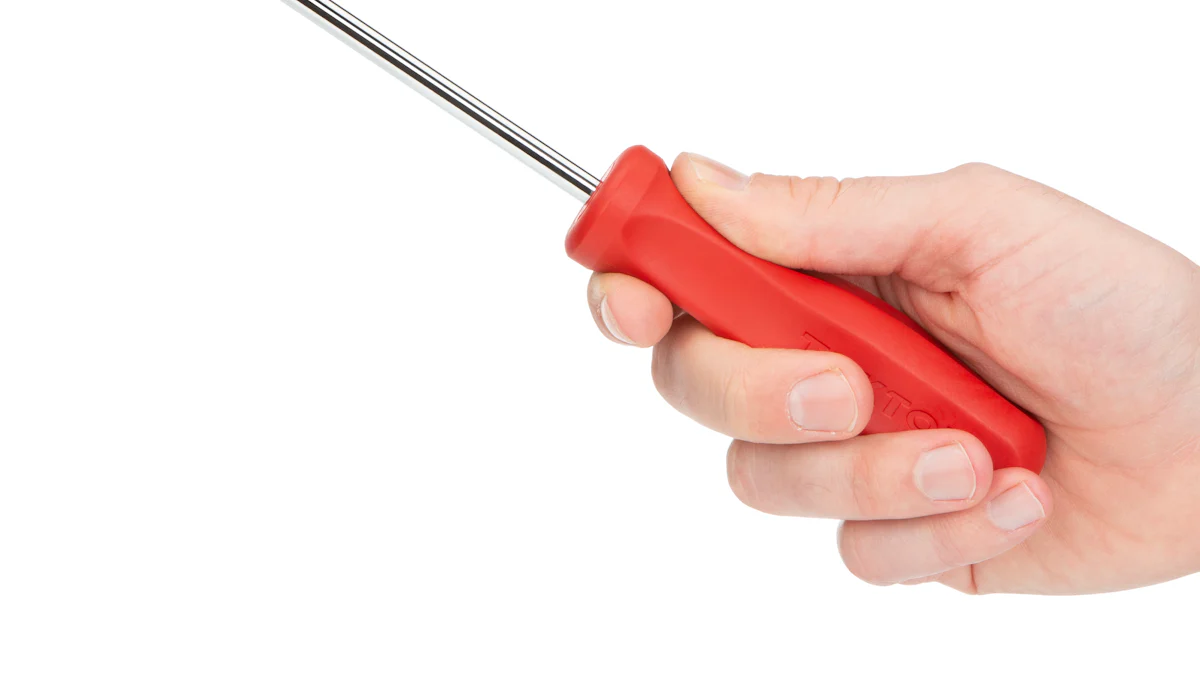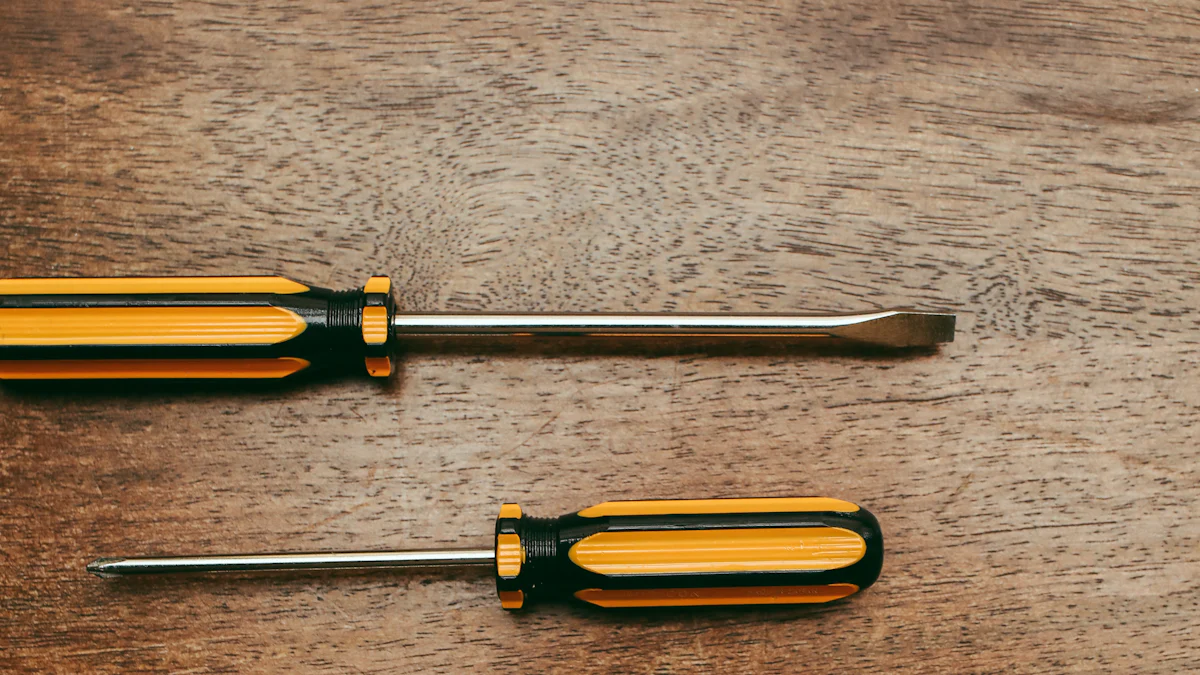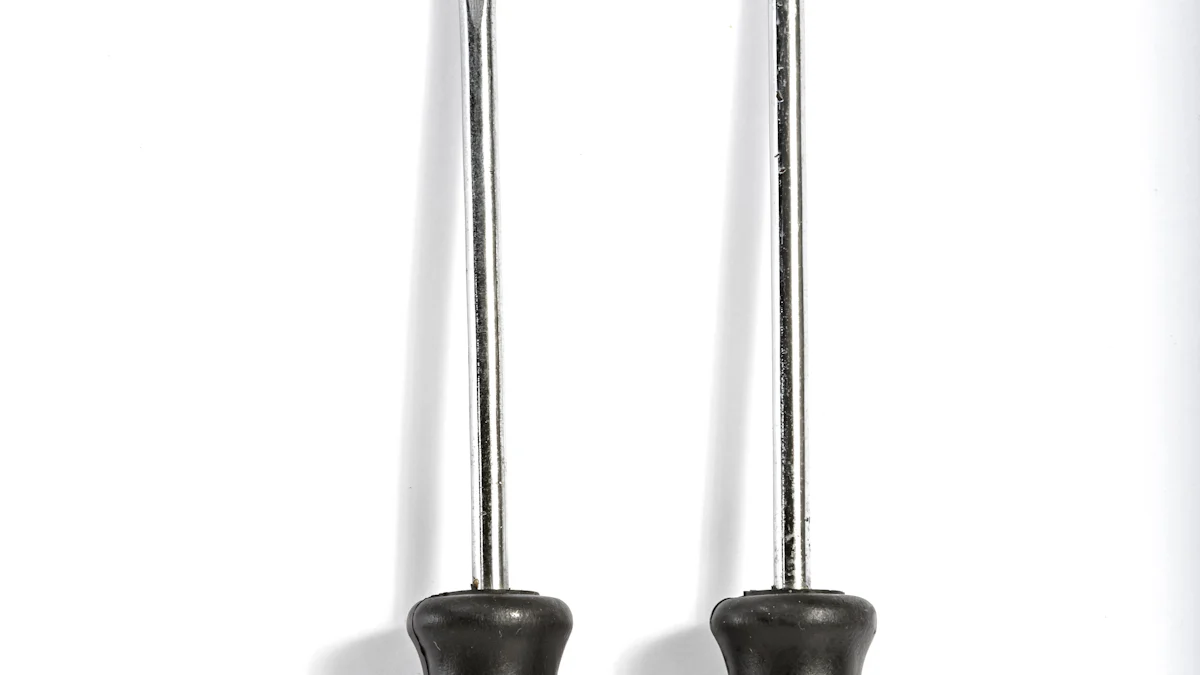
A tri point screwdriver serves as a specialized tool designed for specific fasteners. Using the right tool for the job ensures efficiency and prevents damage to components. The unique design of the tri point screwdriver, featuring three points rather than the traditional four, makes it essential for working on many cell phones, digital cameras, and handheld electronics. Brands like Sanyo, Kyocera, and Nintendo Game Boy often use tri point fasteners, highlighting the screwdriver’s importance in modern electronics repair.
Understanding the Tri Point Screwdriver

What is a Tri Point Screwdriver?
Design and Structure
A tri point screwdriver features a unique design. The tool has three points instead of the traditional four. This design allows for a more secure fit in specific fasteners. The handle provides a comfortable grip for precise control. The shaft connects the handle to the tri point tip, ensuring stability during use.
Common Uses
The tri point screwdriver finds common use in electronics repair. Many cell phones, digital cameras, and handheld devices use tri point screws. Brands like Sanyo, Kyocera, and Nintendo Game Boy often incorporate these fasteners. The tool proves essential for technicians working on modern electronics.
Why Use a Tri Point Screwdriver?
Advantages Over Other Screwdrivers
A tri point screwdriver offers several advantages. The unique design reduces the risk of slippage. This minimizes damage to surrounding components. The tool provides a more secure grip on fasteners. This ensures efficient and safe operation.
Specific Applications
Specific applications benefit from using a tri point screwdriver. Electronics repair often requires this specialized tool. Devices with tri point screws need a matching screwdriver for proper maintenance. The tool proves invaluable for technicians handling sensitive electronics.
How to Use a Tri Point Screwdriver Safely

Safety Precautions
Proper Handling Techniques
Maintaining a straight angle while using a tri point screwdriver is crucial. Keeping the tool aligned with the screw head prevents slippage. Applying firm pressure before turning the screw ensures a secure grip. This technique minimizes the risk of damaging surrounding components. Always insert the screwdriver tip fully into the screw head before twisting.
Protective Gear
Wearing protective gear enhances safety during tool use. Safety glasses protect eyes from potential debris. Gloves provide a better grip and protect hands from sharp edges. Using a non-slip mat can stabilize the work surface. Ensuring a well-lit workspace reduces the chance of errors.
Common Mistakes to Avoid
Incorrect Usage
Incorrect usage of a tri point screwdriver can cause damage. Using the wrong size screwdriver may strip the screw head. This makes removal difficult and can damage the device. Always select the appropriate size for the specific fastener. Avoid using excessive force, which can break the tool or the screw.
Over-tightening Screws
Over-tightening screws is a common mistake. Applying too much torque can strip the screw threads. This weakens the fastener’s hold and may damage the component. Tighten screws just enough to secure them without forcing. Using a torque-limiting screwdriver can help achieve the correct tightness.
Maintenance and Care for Your Tri Point Screwdriver
Cleaning Tips
Regular Maintenance
Regular maintenance ensures the longevity of a tri point screwdriver. Wipe the tool with a clean, dry cloth after each use. This removes dust and debris that can accumulate on the surface. Inspect the tip for wear or damage. Replace the tool if the tip shows signs of excessive wear. Regularly check the handle for cracks or splits. A damaged handle can compromise grip and control.
Deep Cleaning
Deep cleaning involves more thorough steps. Use a soft brush to remove stubborn dirt from the tip and shaft. Apply a small amount of rubbing alcohol to a cloth. Wipe down the entire screwdriver to disinfect it. Avoid using water, which can cause rust. Ensure the tool dries completely before storing it. Regular deep cleaning maintains the tool’s performance and extends its lifespan.
Storage Solutions
Proper Storage Techniques
Proper storage techniques prevent damage and maintain the tool’s effectiveness. Store the tri point screwdriver in a dry, cool place. Use a tool organizer or toolbox to keep it secure. Ensure the tool does not come into contact with other metal objects. This prevents scratches and dents on the tip and shaft. Label the storage area to easily identify the tool when needed.
Avoiding Damage
Avoiding damage involves careful handling and storage practices. Never drop the screwdriver, as this can damage the tip. Keep the tool away from moisture to prevent rust. Use protective caps for the tip when not in use. Store the tool in an upright position to maintain its shape. Following these guidelines ensures the tri point screwdriver remains in optimal condition for future use.
Additional Tips and Tricks
Enhancing Efficiency
Using the Right Size
Using the correct size tri point screwdriver ensures efficient work. Select a screwdriver that matches the screw head size. This prevents stripping and provides a secure fit. Proper size selection enhances control and reduces effort.
Leveraging Additional Tools
Additional tools can enhance the efficiency of a tri point screwdriver. A magnetic tip holds screws in place, preventing loss. A torque-limiting screwdriver ensures proper tightness without over-tightening. A non-slip mat stabilizes the work area, reducing errors.
Troubleshooting Common Issues
Stripped Screws
Stripped screws pose a common problem during repairs. Use a rubber band between the screwdriver and screw head for extra grip. Apply firm pressure and turn slowly to remove the screw. If the screw remains stuck, use a screw extractor tool.
Worn-out Tips
Worn-out tips reduce the effectiveness of a tri point screwdriver. Regularly inspect the tip for signs of wear. Replace the screwdriver if the tip appears damaged or worn. Using a worn tip can damage screws and hinder repair efforts.
“High quality! Exactly as described, worked perfectly for taking apart my Game Boy pockets and Switch Joy-Cons. Very happy with these screwdrivers.” – Satisfied Customer
“These screwdrivers are sweet! Perfect for taking apart and fixing my kid’s 3DS. Sturdy, economical, and perfect for even the smallest screws.” – Happy Parent
“I took apart my GBA SP. Simple to use and convenient. I like that the tips are magnetized so I won’t lose the screws that are small.” – Gamer Enthusiast
Using a tri point screwdriver correctly ensures efficiency and prevents damage. Following safety tips and best practices enhances the tool’s effectiveness. Proper handling techniques and protective gear play crucial roles in safe usage.
“High quality! Exactly as described, worked perfectly for taking apart my Game Boy pockets and Switch Joy-Cons.” – Satisfied Customer
Readers are encouraged to share personal experiences or additional tips in the comments. For further reading, explore additional resources on electronics repair and tool maintenance.
See Also
Scooter Upgrades: High-Quality Parts for Optimal Performance
Men and Women’s Sock Selection: A Diverse Range
